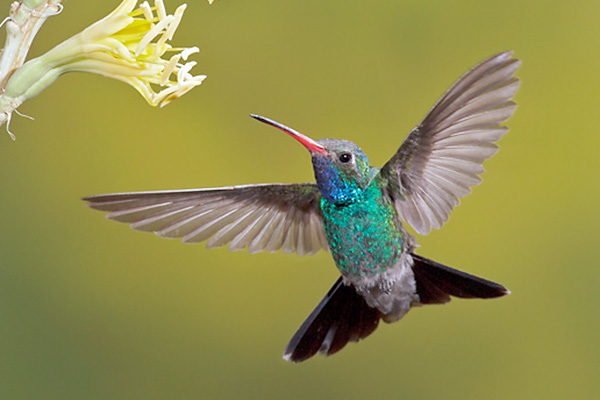
Where do hummingbirds go in winter? During the winter months, although we can still see hummingbirds in some western states, they disappear from other parts of the country.
Where and why do hummingbirds go? What do they do in those far off places? See this post to find answers to these and other questions about migrating hummingbirds!
On this page
Why Do Hummingbirds Migrate?
Hummingbirds migrate to survive. Like so many other birds that migrate to the south in fall and come back again in spring, hummingbirds have to leave because they can’t live in winter weather.
Migratory hummingbirds like the Ruby-throated Hummingbird and the Broad-tailed Hummingbirds don’t have adaptations for extreme cold.
Even though the Broad-tailed lives in some pretty cool, high-elevation areas, when the temperature drops below zero, it can’t survive for long. The same goes for the Ruby-throated Hummingbird and all other hummingbird species.
These tiny iridescent dynamos just don’t have the right types of feathers to keep them warm in extremely low temperatures. Their high metabolism also prevents them from storing energy needed to keep their bodies warm in cold climates. They can fall into deep sleep, also known as torpor, a specific hibernation type.
Related: Do Birds Hibernate?
The other main reason why hummingbirds migrate is also why most birds fly south. It’s all about food; when the things birds feed on are gone, the only option for survival is flying to where they can find food.
For birds that eat insects, that means moving south to warmer places with temperatures that don’t usually fall below zero. Hummingbirds migrate to where they can feed on the same things they eat on their breeding grounds; small flying insects and nectar.
Hummingbirds & Their Migration Patterns
Allen’s Hummingbird
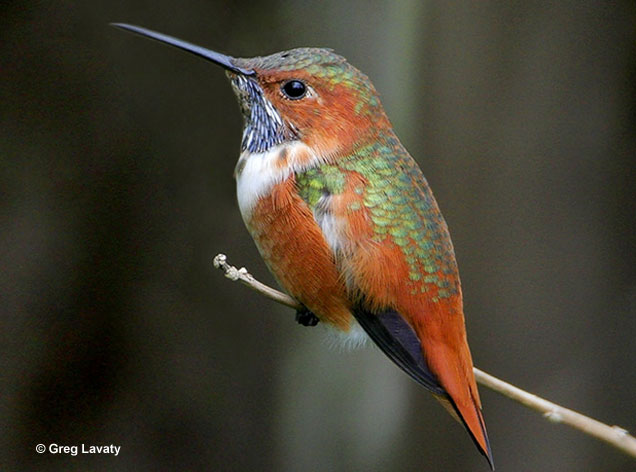
The Allen’s Hummingbird breeds in brushy coastal habitats in southern Oregon and California. However, unlike other hummingbirds, they don’t come back to their breeding grounds in spring. Instead, to take advantage of abundant food generated by wet winter weather, Allen’s Hummingbirds return to their breeding grounds in winter.
After breeding, they migrate south in late spring. Essentially, these hummingbirds spend the summer on their non-breeding grounds in Mexico. For most of them, this is an area with brushy mountain habitats in central Mexico.
During migration, we can also see this hummingbird in California and Arizona. Once in a while, Allen’s Hummingbirds also show up at feeders in the southeastern USA.
Anna’s Hummingbird
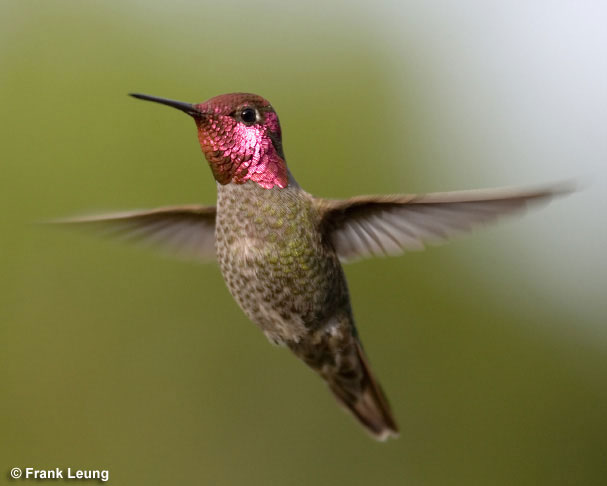
The Anna’s Hummingbird breeds in gardens, parks, and brushy habitats in parts of southern British Columbia, Washington, Oregon, and California. These migrants breed in similar habitats in southern Nevada, Arizona, and Baja California.
Related: How to attract hummingbirds?
Although most are year-round, permanent residents, some populations make seasonal movements. Birds that breed in southern California often move to higher elevations from June to October. Other Anna’s Hummingbirds can move around in search of flowering plants.
Birds that breed in some colder montane areas also move to lower elevations in late fall and winter. At this time of year, more Anna’s Hummingbirds occur at feeders and gardens in desert areas of Arizona.
Black-chinned Hummingbird
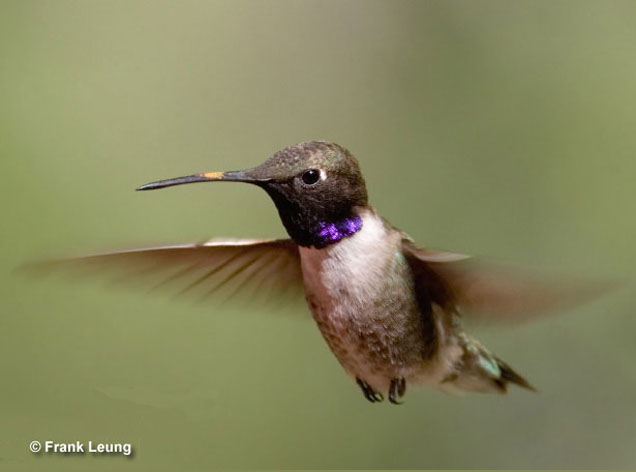
The Black-chinned Hummingbird breeds in semi-open habitats, gardens, parks, riparian zones, and canyons. It spends part of spring and summer in southern British Columbia, central Texas, and west of the Rocky Mountains in much of the western USA. Some Black-chinned Hummingbirds also breed in similar habitats in northern Mexico.
These hummingbirds arrive on their breeding grounds in late spring and stay until June and July. At that time, males migrate south while females and young birds remain on their breeding grounds until autumn.
Black-chinned Hummingbirds fly south to spend the winter in hot, dry tropical habitats in western and central Mexico.
Broad-billed Hummingbird
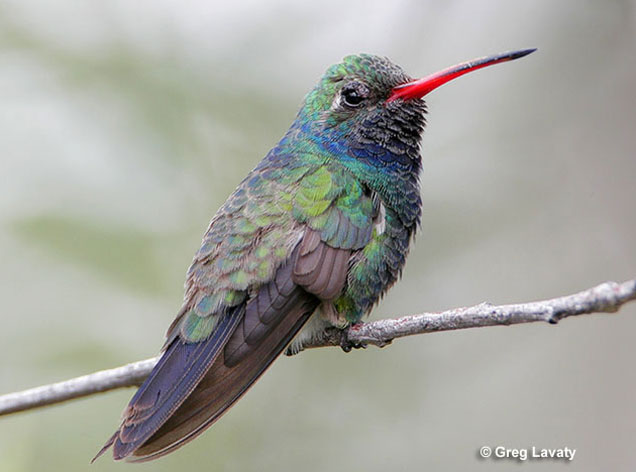
In the USA, the Broad-billed Hummingbird breeds in forested and brushy canyons in arid zones. They usually occur below 6,000 feet and nest in southeastern Arizona and adjacent New Mexico.
This species also lives in a wider variety of brushy and tropical woodland habitats in large parts of western and central Mexico. Although most Broad-billed Hummingbirds that breed in Mexico are permanent residents, birds that breed in the USA and northern Mexico migrate south for the winter.
Learn more: 16 hummingbird species you can see in the U.S.
This species arrives on its breeding grounds in March and leaves by August and September. It winters in western and central Mexico, often at lower elevations.
Broad-tailed Hummingbird
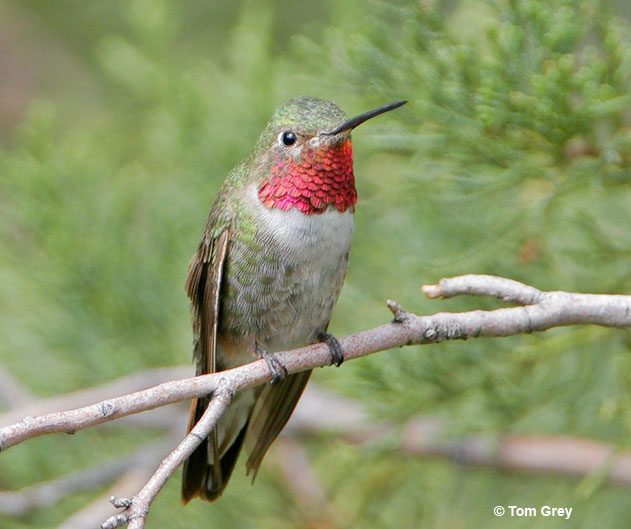
Broad-tailed Hummingbirds breed in flowering meadows and brushy habitats in the Rocky Mountains. In summer, it ranges from western Texas to southern Montana.
This species is also resident in evergreen forests and shrubby habitats in the mountains of Mexico and Guatemala.
Broad-tailed Hummingbirds arrive on their breeding grounds in spring and stay there until mid to late summer. Some females and young birds also remain until September. All Broad-tailed Hummingbirds that breed in the USA migrate to montane habitats in Mexico for the winter.
In common with several migratory hummingbird species, Broad-tailed Hummingbirds occasionally wander well east of their normal range.
Calliope Hummingbird
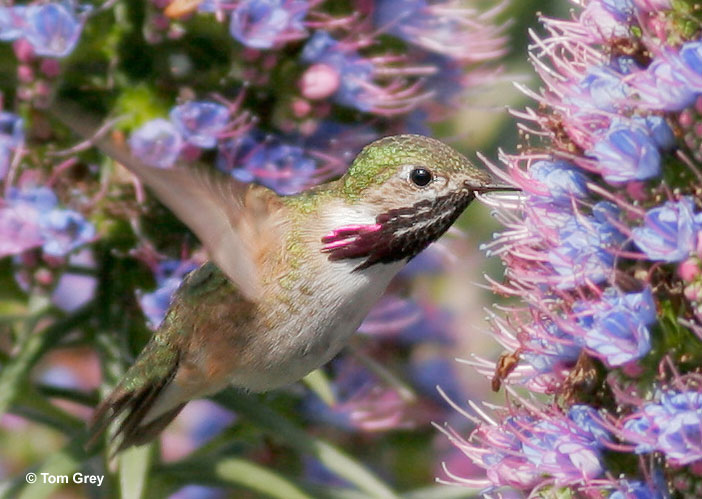
The Calliope Hummingbird breeds in the mountains of southwestern Canada and the western USA south to California and Utah. It arrives on its breeding grounds in spring and spends the summer in montane brushy habitats, and riparian zones.
By late summer and early fall, Calliope Hummingbirds migrate south through the Rocky Mountains to warmer climates(usually southern Mexico). They winter in brushy habitats near dry and humid tropical forests.
When this hummingbird migrates north, it follows a coastal route that takes it up through California before heading east to the northern Rocky Mountains. During migration, this tiny bird has shown up in many places east of its regular range.
Costa’s Hummingbird
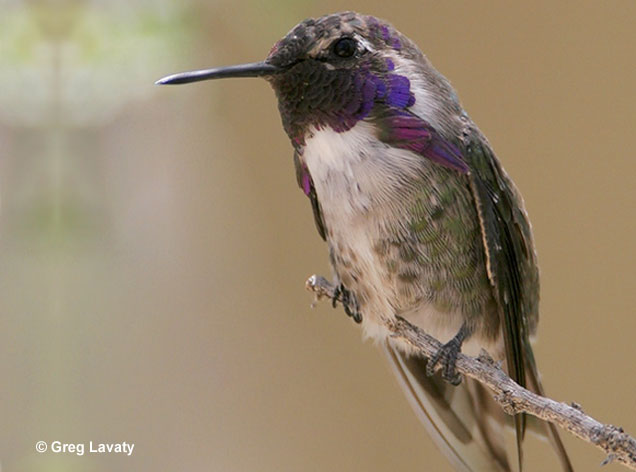
The Costa’s Hummingbird breeds in arid coastal habitats and deserts in the southwestern USA, and in northwestern Mexico. Some desert populations arrive on their breeding grounds in late fall but nest in spring.
However, birds that breed in and near the Mojave desert arrive to their nesting grounds in early spring and leave by late summer. Breeding populations from the California coast show up in March and migrate south in September.
This species can move around in search of flowering plants, but most spend the non-breeding season in western Mexico. Some Costa’s Hummingbirds also winter at low elevations in California and Arizona.
Ruby-throated Hummingbird
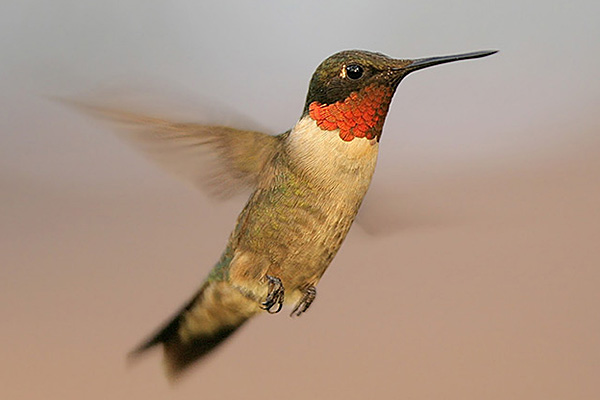
Photograph © Greg Lavaty.
The Ruby-throated Hummingbird spends the summer in a variety of woodland habitats in central and southeastern Canada. In the USA, it breeds in and near forests and wooded areas east of the Rocky Mountains.
They can also make nests in forested parks and big, semi-forested gardens.
This familiar eastern hummingbird species arrives on its breeding grounds in April. During spring migration, many fly north, straight across the waters of the Gulf of Mexico.
After breeding, most Ruby-throated Hummingbirds leave by September. They migrate south to gardens, scrubby habitats, and tropical dry forest from parts of the southeastern USA to western Mexico, and Panama.
Rufous Hummingbird
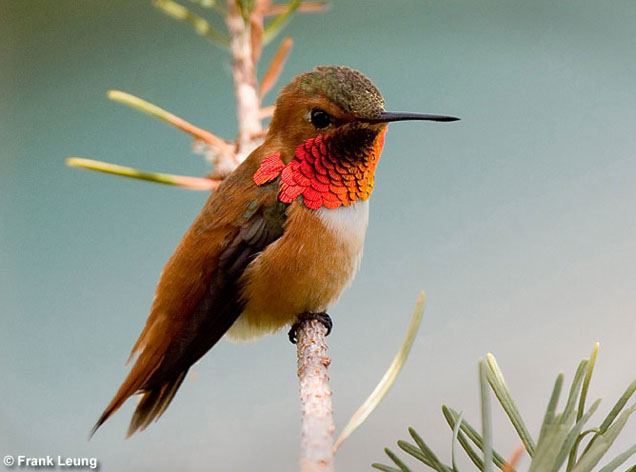
The Rufous Hummingbird breeds in edge and wooded habitats in southern Alaska, western Canada, and the northwestern USA. They arrive on their nesting grounds in early spring, stay for a couple months, and then start to migrate south again.
Most of these small birds leave their breeding range by June to migrate through and feed in the Rocky Mountains in July and August.
By September, Rufous Hummingbirds eventually reach their wintering grounds in central America. After spending a few months in wooded and scrubby habitats there, they begin to migrate back north. On the way to their breeding grounds, they take a route through western Mexico and California.
Fun Facts
- The Rufous Hummingbird migrates further than any other hummingbird species. Some birds fly from Alaska south through the Rocky Mountains, all the way to Mexico. Then, they fly back north along the Pacific coast.
- During winter, hummingbirds act the same as during the summer months. They use tropical habitats but still catch small insects, and take nectar from bushes and other flowering plants.
- Hummingbird feeders may be helping to change the wintering ranges of Rufous Hummingbirds and a few other western species. As hummingbird feeders have become more prevalent, western hummingbirds have become much more frequent and even regular in some eastern states.
- Male hummingbirds usually arrive at breeding grounds well before females arrive. Males of several species also leave their breeding grounds shortly after nesting.
- To have enough energy for long-distance migration, hummingbirds double their weight before making the journey.
- Hummingbirds migrate alone. Although several can occur in the same area, they do not form flocks.
- In ideal conditions, these small birds can fly for 20 hours, and move 500 miles in one day!
- If a hummingbird finds a good food source during migration, it can remember that spot and come back the following year. This may be why western hummingbird species have increased at feeders in the eastern USA.
- Taking feeders down does not cause hummingbirds to migrate. They migrate based on the length of day and other factors they have become attuned to over thousands of years of evolution.
- Don’t wait for hummingbirds to come back to put up feeders. We fill hummingbird feeders before migration so the birds can have food when they are moving through the surrounding area.
Frequently Asked Questions
Are there any hummingbirds that do not migrate?
Most species of tropical hummingbirds do not migrate. However, in the United States, all hummingbirds migrate to the south.
How long should you keep up hummingbird feeders?
You should keep up hummingbird feeders from just before migration, through the breeding season, and just after migration. You should also keep them up as long as hummingbirds are visiting your garden.
Do hummingbirds have set migration routes?
Hummingbirds do not have specific migration routes. They migrate using their instincts. What makes this even more fascinating is that hummingbirds do not travel in groups. Each bird travels on their own.
Attract Hummingbirds to your garden – Selection of Hummingbird Feeders

